Washington D.C., the dazzling capital of the United States, is renowned not only for its historical architecture, museums, and cultural landmarks but also as an appealing destination for nature enthusiasts and birdwatching aficionados. Situated on a significant migratory route for numerous bird species, Washington D.C. presents a unique opportunity to witness the beauty of migratory birds amidst a vibrant urban environment. Join Discovery To Wonders as we explore the remarkable birdwatching experiences in Washington D.C. and immerse ourselves in the diverse natural world at the heart of the city.
Adams Morgan: Birding Amidst Art and Culinary Delights
Adams Morgan, a lively and diverse neighborhood, is not just an ideal spot for those who love nightlife and international cuisine but also an intriguing place to begin your birdwatching journey. While not a sprawling natural park, Adams Morgan still features smaller green spaces and tree-lined residential areas, attracting a variety of urban and small migratory birds.
As you stroll through the bustling streets of Adams Morgan, pay attention to the greenery and small gardens. You might spot playful House Sparrows, vibrant Northern Cardinals, or clever Blue Jays. Especially during spring and fall, as migratory birds pass through, you might be lucky enough to see bright yellow American Goldfinches, tiny but agile Ruby-throated Hummingbirds, or even a Cooper’s Hawk hunting overhead.
To enhance your birding opportunities, consider visiting Kalorama Park, a tranquil green space near Adams Morgan. This park, with its mature trees and rich vegetation, provides an ideal refuge for many bird species. Spend time relaxing on park benches and carefully observe the canopies; you may discover various birds.
Tips for Birdwatching in Adams Morgan:
- Best Times: Spring and fall are ideal for migratory birdwatching. Early morning or late afternoon are usually when birds are most active.
- Suggested Locations: Kalorama Park, tree-lined residential streets, small flower gardens.
- Possible Bird Species: House Sparrow, Northern Cardinal, Blue Jay, American Goldfinch, Ruby-throated Hummingbird, Cooper’s Hawk.
- Combine Your Experience: After birdwatching, enjoy the diverse cuisine at international restaurants and explore the unique art scene of Adams Morgan.
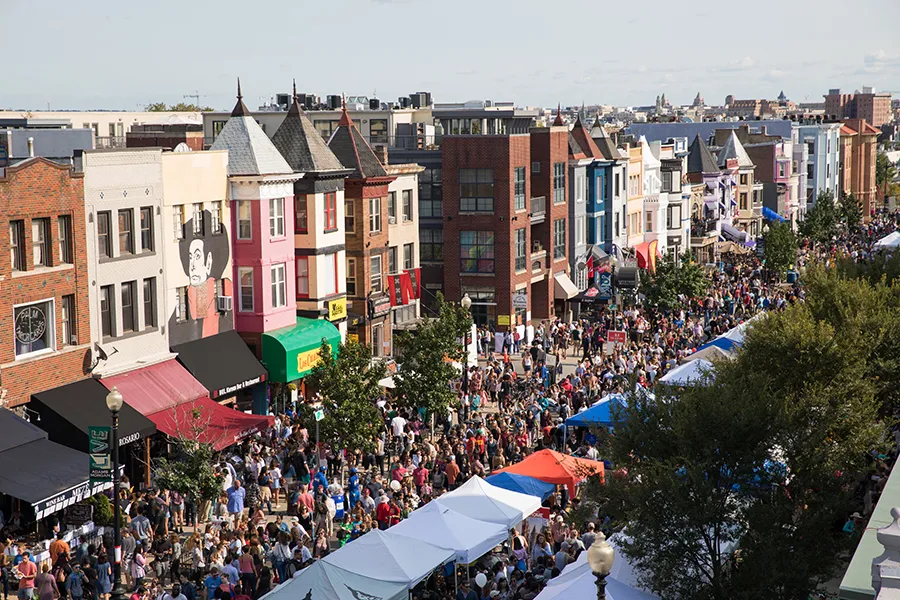
Dupont Circle: Birding in a Setting of History and Culture
Dupont Circle, with its sophisticated and charming ambiance, is not only a cultural and historical center of Washington D.C. but also an interesting birdwatching location. Dupont Circle Park, the neighborhood’s heart, is a refreshing green oasis in the urban core, attracting many birds seeking food and shelter.
Upon entering Dupont Circle Park, you’ll immediately sense peace and tranquility. Mature trees providing shade, vibrant flower beds, and a central fountain create an ideal space to relax and connect with nature. This park is home to resident birds like Rock Pigeons, European Starlings, and House Sparrows. During migration seasons, the park also becomes a vital stopover for many migratory birds.
Take time to stroll around the park, carefully observing the tree canopies and shrubs. You might encounter gentle Mourning Doves, tiny but melodious Carolina Wrens, or American Robins foraging for insects on the lawn. If you’re fortunate, you might see Barn Swallows soaring overhead or White-throated Sparrows foraging on the ground.
Tips for Birdwatching in Dupont Circle:
- Best Times: Similar to Adams Morgan, spring and fall are ideal. Dupont Circle Park is especially beautiful in the early morning when the sunrise illuminates it.
- Suggested Locations: Dupont Circle Park, especially around the fountain and under large trees.
- Possible Bird Species: Rock Pigeon, European Starling, House Sparrow, Mourning Dove, Carolina Wren, American Robin, Barn Swallow, White-throated Sparrow.
- Combine Your Experience: After birdwatching, visit The Phillips Collection, America’s first museum of modern art, or explore the Dupont Circle Farmers Market on Sundays.
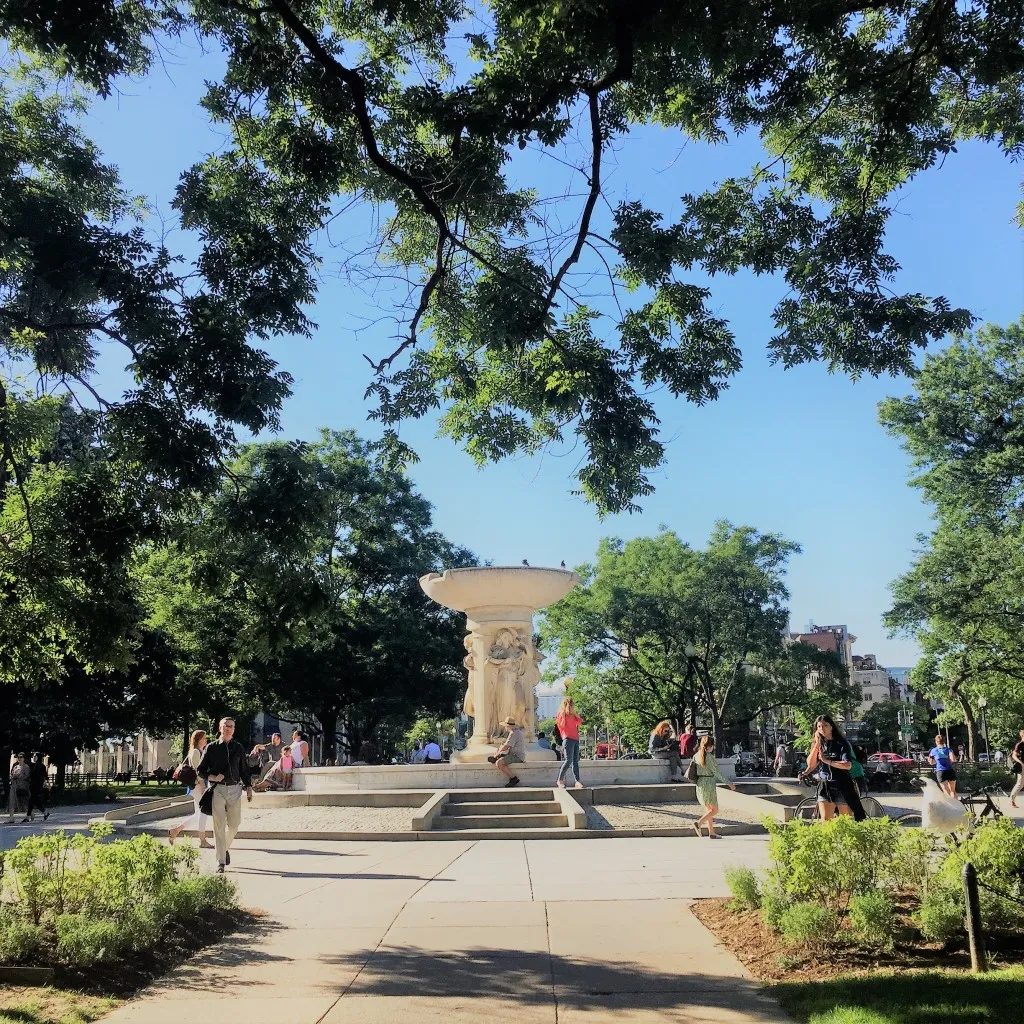
U Street: Birding in a Cultural and Historical Space
U Street, the heart of jazz music and Black cultural heritage in Washington D.C., is not only a compelling destination for music and history lovers but also a surprising place for birdwatching. The U Street Corridor, with its tree-lined streets and small parks, provides habitat for several urban and migratory bird species.
As you explore U Street, take time to walk along the streets and observe the trees. You might encounter House Sparrows, European Starlings, and Rock Pigeons, birds accustomed to urban environments. However, if you pay closer attention, you might discover more interesting species.
Cardozo Playground, a small green space in the heart of U Street, is an ideal stop for birdwatchers. This park, with trees and open spaces, can attract small migratory birds such as White-throated Sparrows, Dark-eyed Juncos, and American Robins. In spring, you might hear the melodic songs of Northern Cardinals and Carolina Wrens.
Tips for Birdwatching in U Street:
- Best Times: Spring and fall remain the best times. Early morning or late afternoon is when birds are most active.
- Suggested Locations: Cardozo Playground, tree-lined streets, areas around the African American Civil War Memorial and Museum.
- Possible Bird Species: House Sparrow, European Starling, Rock Pigeon, White-throated Sparrow, Dark-eyed Junco, American Robin, Northern Cardinal, Carolina Wren.
- Combine Your Experience: After birdwatching, explore the rich cultural and historical heritage of U Street, enjoy live music at the legendary Howard Theatre, or explore the nearby 14th Street Corridor.
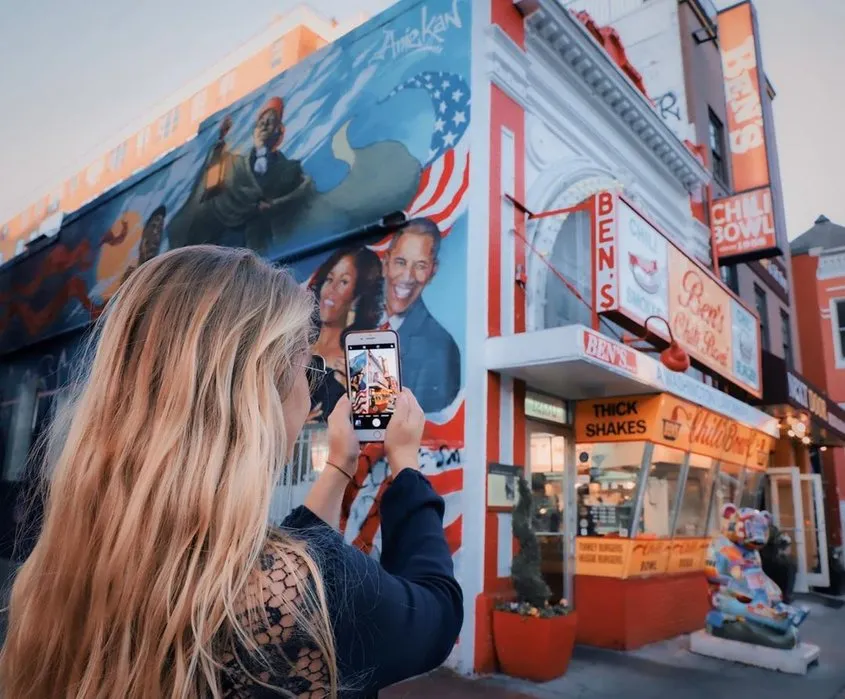
Georgetown: Birding by the Historic Canal
Georgetown, Washington D.C.’s oldest neighborhood, offers a unique blend of historical charm, captivating architecture, and natural beauty. The C&O Canal and the Potomac River waterfront create an ideal habitat for many bird species, making Georgetown an attractive destination for birdwatching enthusiasts.
As you explore Georgetown, take time to walk along the C&O Canal. This historic canal, with its gentle waters and shaded trees, is home to numerous waterbirds and riparian birds. You might spot Mallards swimming in the canal, Ring-billed Gulls soaring overhead, or a Great Blue Heron standing still by the canal bank.
Besides the canal, Georgetown also boasts small parks and green gardens, attracting urban and migratory birds. Volta Park, with its spacious green space and lush vegetation, is an excellent birding spot. Relax on a park bench and carefully observe the trees; you might discover Red-bellied Woodpeckers, Carolina Wrens, and American Goldfinches.
Tips for Birdwatching in Georgetown:
- Best Times: Spring and fall are ideal for migratory birdwatching. Summer is also a good time to watch waterbirds along the C&O Canal.
- Suggested Locations: C&O Canal, Volta Park, Potomac River waterfront.
- Possible Bird Species: Mallard, Ring-billed Gull, Great Blue Heron, Red-bellied Woodpecker, Carolina Wren, American Goldfinch, White-throated Sparrow, Dark-eyed Junco.
- Combine Your Experience: After birdwatching, explore Georgetown’s charming cobblestone streets, shop for high-end fashion, or enjoy fine dining by the river.
H Street NE: Discovering Birds Amidst Urban Transformation
H Street NE, a neighborhood undergoing significant transformation, is an intriguing mix of modernity and historical imprints. While not known for vast green spaces, H Street NE still features small pockets of nature and urban greenery, attracting some bird species adapted to this environment.
As you explore H Street NE, notice the street trees and small community gardens. You might encounter House Sparrows, European Starlings, and Rock Pigeons, common urban birds. However, if you take time to observe more closely, you might discover surprises.
Lincoln Park, located not far from H Street NE, is a larger green space offering more diverse birding opportunities. This park, with dense trees and a small pond, can attract migratory birds like Swamp Sparrows, Song Sparrows, and Northern Mockingbirds. In spring, you might hear the songs of Northern Cardinals and Carolina Wrens.
Tips for Birdwatching in H Street NE:
- Best Times: Spring and fall are the best times for migratory birdwatching. Early morning or late afternoon is when birds are most active.
- Suggested Locations: Lincoln Park (near H Street NE), street trees, small community gardens.
- Possible Bird Species: House Sparrow, European Starling, Rock Pigeon, Swamp Sparrow, Song Sparrow, Northern Mockingbird, Northern Cardinal, Carolina Wren.
- Combine Your Experience: After birdwatching, explore international restaurants, live music venues, and the unique art scene of H Street NE.
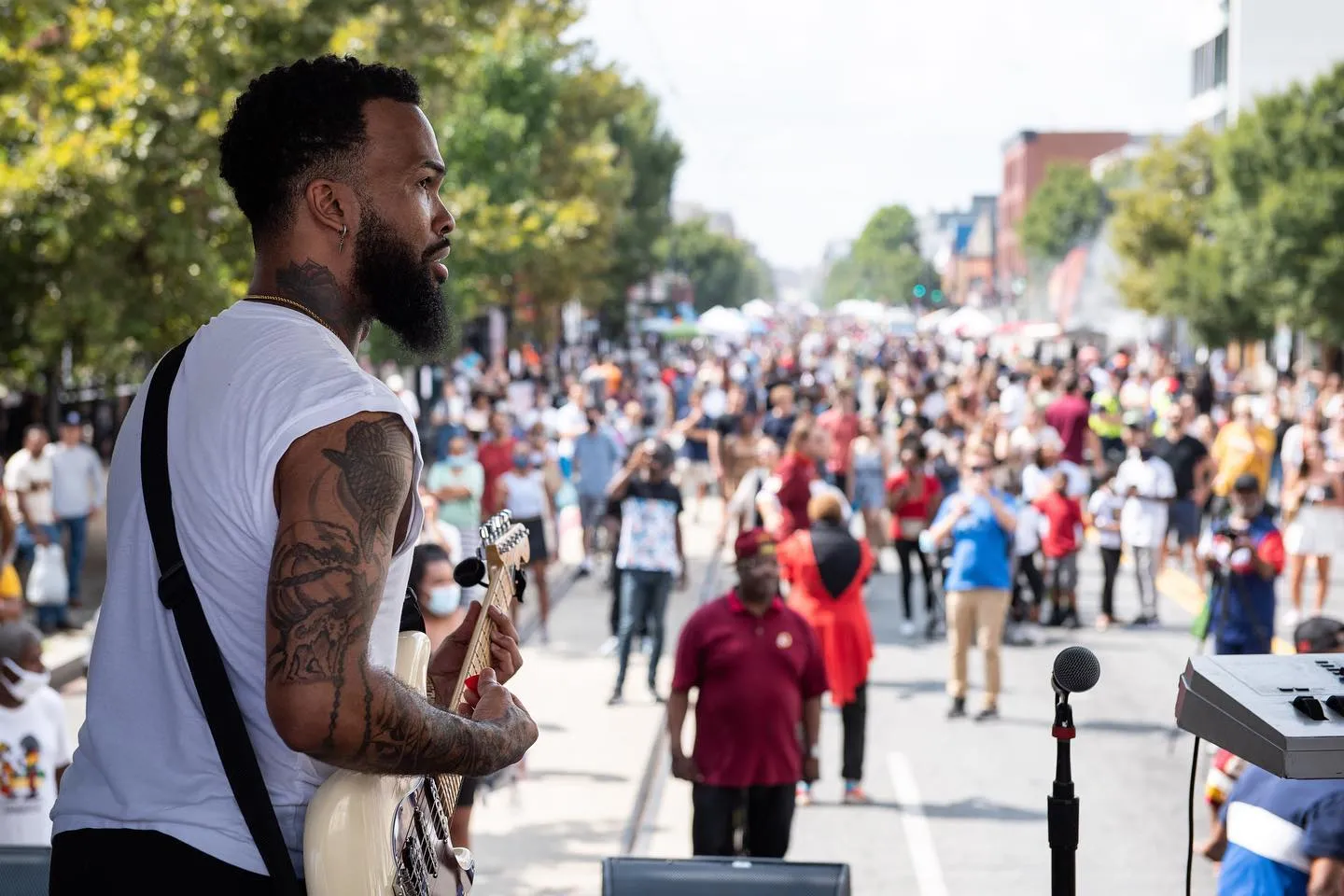
Capitol Hill: Birding in the Heart of Politics and History
Capitol Hill, the political and historical center of Washington D.C., is not only home to the U.S. Capitol Building and the Library of Congress but also a green neighborhood with numerous parks and natural spaces. Capitol Hill offers unique birdwatching opportunities, blending natural beauty with the grandeur of historical landmarks.
The U.S. Botanic Garden, a vast green oasis at the foot of the Capitol Building, is a must-visit destination for birdwatching enthusiasts. This botanic garden, with its diverse plant collection and themed gardens, attracts various bird species. Explore the National Garden, Regional Garden, and World Garden to look for different birds.
Stanton Park, a historic park in the center of Capitol Hill, is also an interesting birding spot. This park, with mature trees and spacious green areas, is home to many urban and migratory birds. Spend time walking in the park, carefully observing the canopies and shrubs; you might discover Red-headed Woodpeckers, Eastern Towhees, and Northern Flickers.
Tips for Birdwatching in Capitol Hill:
- Best Times: Spring and fall are ideal for migratory birdwatching. The U.S. Botanic Garden is open year-round and always has something interesting to explore.
- Suggested Locations: U.S. Botanic Garden, Stanton Park, tree-lined streets around the Capitol Building.
- Possible Bird Species: Red-headed Woodpecker, Eastern Towhee, Northern Flicker, House Sparrow, European Starling, Rock Pigeon, White-throated Sparrow, Dark-eyed Junco.
- Combine Your Experience: After birdwatching, visit the U.S. Capitol Building, Library of Congress, Eastern Market, and historic Barracks Row.
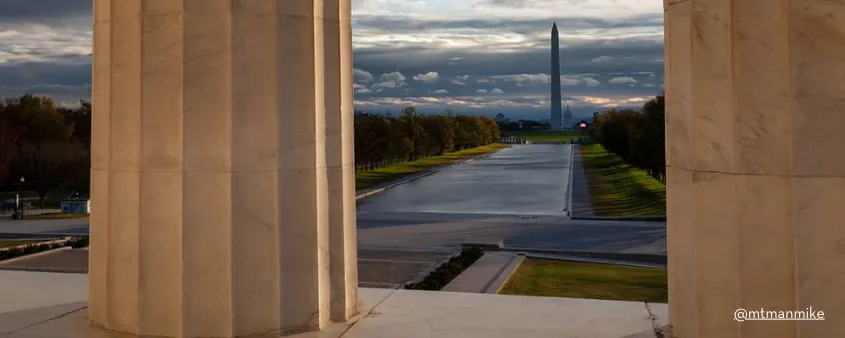
National Mall: Birding Amidst Historical Monuments
The National Mall, “America’s Front Yard,” is not only a central location for historical monuments and famous museums but also a vast green space, offering unique birdwatching opportunities in the heart of the capital. Although primarily open space, the National Mall still attracts some urban and migratory birds thanks to its trees and scattered shrub areas.
As you explore the National Mall, take time to walk along the tree-lined paths and carefully observe shrub areas. You might encounter House Sparrows, European Starlings, and Rock Pigeons, birds accustomed to urban environments. However, during migration seasons, you might be lucky enough to see more interesting migratory birds.
Enid A. Haupt Garden, a beautiful small garden near the Smithsonian Castle, is a green oasis within the National Mall. This garden, with its unique design and rich vegetation, can attract small birds like American Goldfinches, White-throated Sparrows, and Dark-eyed Juncos. Spend time relaxing in the garden and carefully observe the shrubs and flowers; you may discover various bird species.
Tips for Birdwatching on the National Mall:
- Best Times: Spring and fall are ideal for migratory birdwatching. Early morning is the best time to avoid crowds and have better birding opportunities.
- Suggested Locations: Enid A. Haupt Garden, trees along the National Mall, areas around the Washington Monument and Lincoln Memorial.
- Possible Bird Species: House Sparrow, European Starling, Rock Pigeon, American Goldfinch, White-throated Sparrow, Dark-eyed Junco, Barn Swallow (soaring overhead).
- Combine Your Experience: After birdwatching, visit Smithsonian Museums, the Vietnam Veterans Memorial, the Martin Luther King, Jr. Memorial, and the Tidal Basin.
Penn Quarter and Chinatown: Birding Amidst the Urban Pace
Penn Quarter and Chinatown, cultural, culinary, and entertainment hubs of Washington D.C., might not seem like ideal birding destinations. However, even in this bustling urban area, you can still find small green spaces and urban trees, attracting some bird species adapted to city life.
As you explore Penn Quarter and Chinatown, notice small parks and rooftop gardens. Penn Quarter Park, a small green space amidst tall buildings, is a brief stop to look for birds. You might encounter House Sparrows, European Starlings, and Rock Pigeons, birds commonly seen in urban environments.
During migration seasons, you might be lucky enough to see small migratory birds passing through this area. Carefully observe the trees and shrubs; you might discover American Goldfinches, White-throated Sparrows, or Dark-eyed Juncos.
Tips for Birdwatching in Penn Quarter and Chinatown:
- Best Times: Spring and fall are the best times for migratory birdwatching. Early morning or late afternoon is when birds are most active.
- Suggested Locations: Penn Quarter Park, rooftop gardens (if accessible), street trees.
- Possible Bird Species: House Sparrow, European Starling, Rock Pigeon, American Goldfinch, White-throated Sparrow, Dark-eyed Junco.
- Combine Your Experience: After birdwatching, explore museums like the National Portrait Gallery and Smithsonian American Art Museum, enjoy diverse cuisine, and see performances at the Shakespeare Theatre Company or Woolly Mammoth Theatre Company.
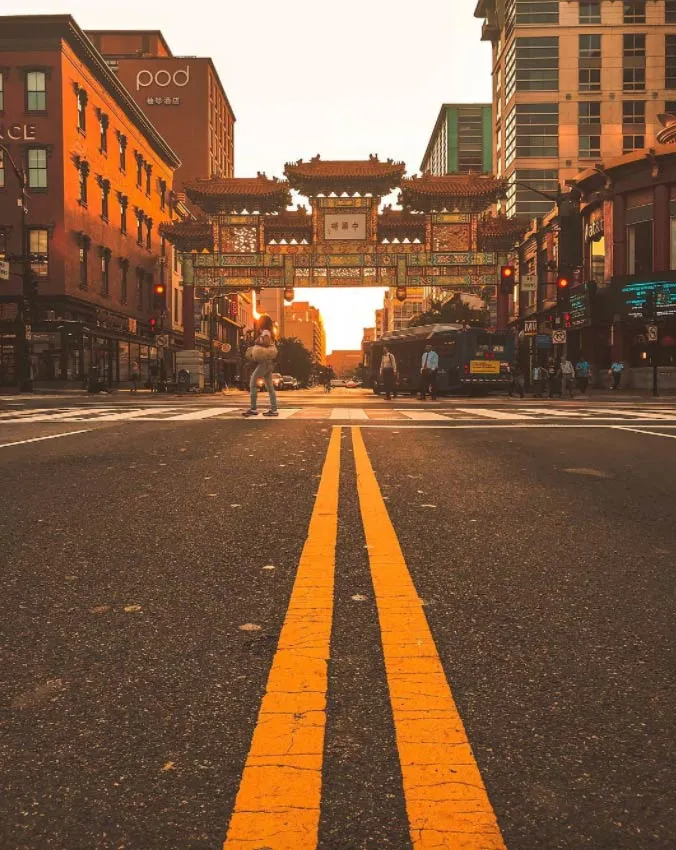
Foggy Bottom: Birding by the Riverfront and Expansive Park
Foggy Bottom, a neighborhood near George Washington University and the Kennedy Center, offers a harmonious blend of urban space and nature. Rock Creek Park, with its vast area and rich biodiversity, is an ideal destination for birdwatching enthusiasts in Foggy Bottom.
Rock Creek Park, one of the nation’s largest urban parks, stretches through many Washington D.C. neighborhoods, including Foggy Bottom. This park, with dense forests, streams, and ponds, is home to countless bird species. Explore the park’s numerous hiking and biking trails to look for different birds.
Along the Potomac River, you might encounter waterbirds like Mallards, Ring-billed Gulls, and Great Blue Herons. In the forests, you might find woodpeckers, sparrows, warblers, and many other woodland birds. Rock Creek Park is an excellent destination for migratory birdwatching in spring and fall.
Tips for Birdwatching in Foggy Bottom:
- Best Times: Spring and fall are the best times for migratory birdwatching. Rock Creek Park is beautiful year-round and always has something interesting to explore.
- Suggested Locations: Rock Creek Park (especially the area near Foggy Bottom), Potomac River waterfront.
- Possible Bird Species: Mallard, Ring-billed Gull, Great Blue Heron, woodpeckers, sparrows, warblers, White-throated Sparrow, Dark-eyed Junco, many other woodland birds.
- Combine Your Experience: After birdwatching, visit the Kennedy Center, Watergate Hotel, and the campus of George Washington University.
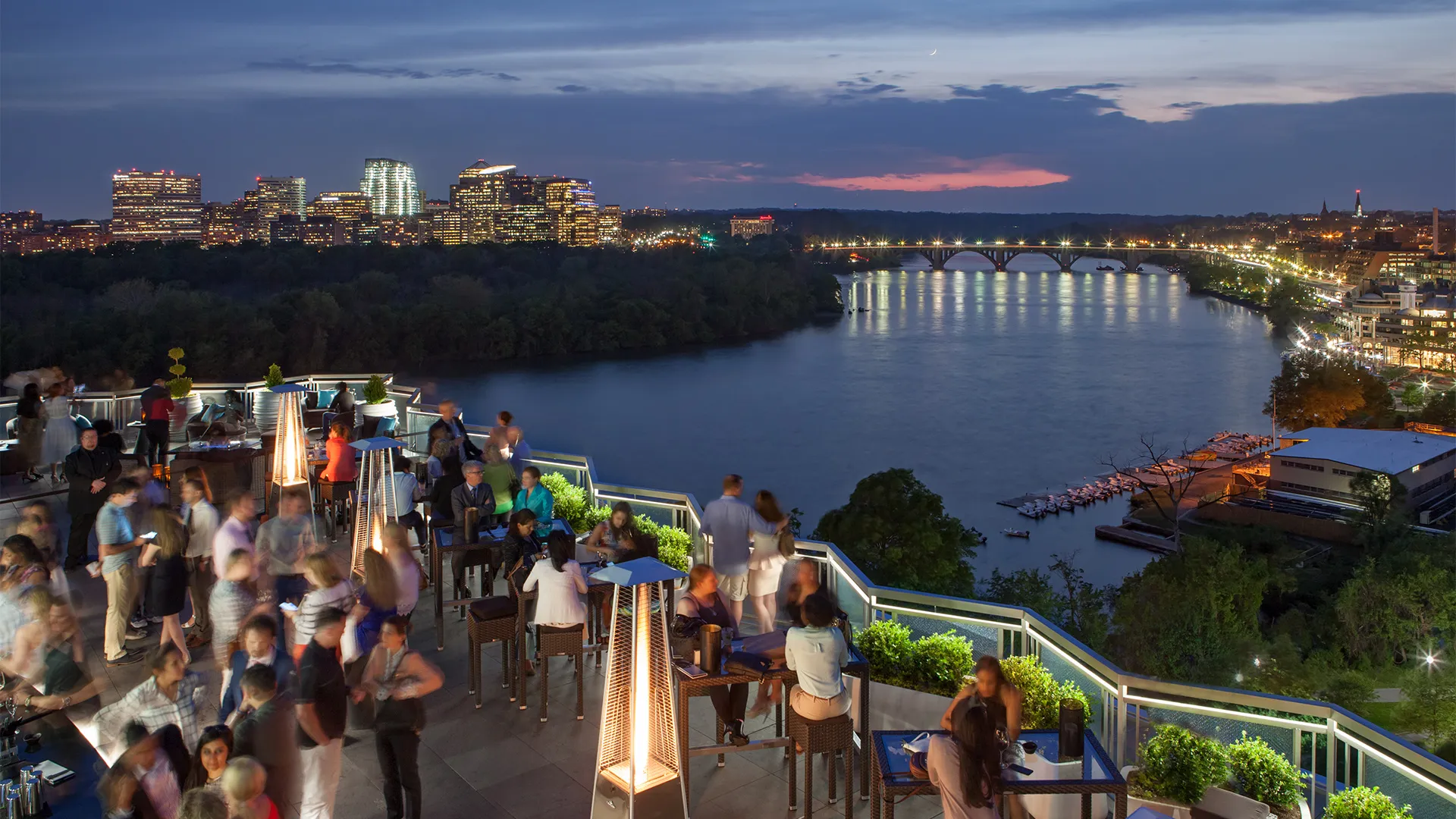
The Wharf: Birding by the Lively Waterfront
The Wharf, a vibrant waterfront neighborhood, has transformed Southwest Waterfront into a bustling entertainment and dining hub. Despite being a developed urban area, The Wharf still offers interesting birdwatching opportunities, especially for waterbirds and coastal birds.
As you walk along the Wharf Promenade, a beautiful boardwalk along the Potomac River, carefully observe the water and sky. You might encounter gulls, Common Terns, and Ospreys soaring overhead or diving to catch fish. In winter, you might see Great Black-backed Gulls and Iceland Gulls arriving from the north.
The Municipal Fish Market at The Wharf, the oldest continuously operating fish market in the United States, is also a bird attraction. While you shouldn’t feed the birds, you can observe species like gulls and Brown Pelicans congregating around the fish market to scavenge for scraps.
Tips for Birdwatching at The Wharf:
- Best Times: Winter is the best time to see northern gull species. Spring and fall are good times for coastal migratory birdwatching.
- Suggested Locations: Wharf Promenade, Municipal Fish Market, areas around The Anthem and Pearl Street Warehouse.
- Possible Bird Species: Gulls, Common Tern, Osprey, Great Black-backed Gull, Iceland Gull, Brown Pelican.
- Combine Your Experience: After birdwatching, enjoy fresh seafood at waterfront restaurants, catch a concert at The Anthem, or explore the International Spy Museum.
Capitol Riverfront: Birding by the Anacostia River
Capitol Riverfront, a dynamic neighborhood along the Anacostia River, has undergone significant transformation in recent years. Yards Park, a beautiful riverside park, is an ideal destination for birdwatching enthusiasts in Capitol Riverfront.
Yards Park, with its spacious green spaces, wetland areas, and riparian vegetation, is home to many waterbirds and riparian birds. Walk along the Anacostia Riverwalk Trail to explore the park and look for different birds.
Along the Anacostia River, you might encounter Mallards, Hooded Mergansers, and Double-crested Cormorants. In the park’s wetland areas, you might find Killdeer, American Avocets, and American Woodcocks. Yards Park is an excellent destination for migratory birdwatching in spring and fall.
Tips for Birdwatching in Capitol Riverfront:
- Best Times: Spring and fall are the best times for migratory birdwatching. Early morning or late afternoon is when birds are most active.
- Suggested Locations: Yards Park, Anacostia Riverwalk Trail.
- Possible Bird Species: Mallard, Hooded Merganser, Double-crested Cormorant, Killdeer, American Avocet, American Woodcock, gulls, terns.
- Combine Your Experience: After birdwatching, explore Nationals Park, attend outdoor events and concerts at Yards Park, or enjoy dining at riverside restaurants.
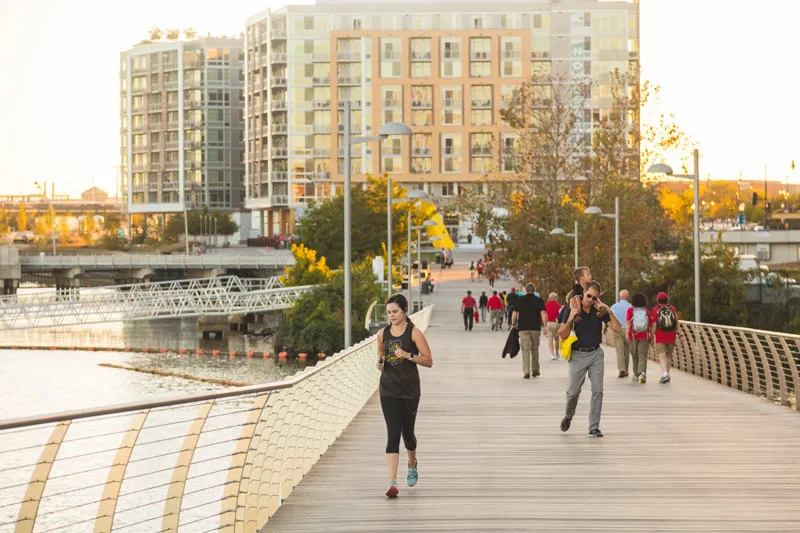
NoMa: Birding Amidst Modern Architecture and Street Art
NoMa, a neighborhood notable for its modern architecture, public art, and vibrant community spaces, might not seem like an ideal birding destination. However, even in this developing urban area, you can still find small green spaces and urban trees, attracting some bird species adapted to city life.
As you explore NoMa, notice Alethia Tanner Park, a newly built green space in the neighborhood’s center. This park, with trees, lawns, and water features, can attract urban and small migratory birds. You might encounter House Sparrows, European Starlings, and Rock Pigeons.
During migration seasons, you might be lucky enough to see migratory birds passing through this area. Carefully observe the trees and shrubs in the park; you might discover American Goldfinches, White-throated Sparrows, or Dark-eyed Juncos.
Tips for Birdwatching in NoMa:
- Best Times: Spring and fall are the best times for migratory birdwatching. Early morning or late afternoon is when birds are most active.
- Suggested Locations: Alethia Tanner Park, street trees, areas around Union Market.
- Possible Bird Species: House Sparrow, European Starling, Rock Pigeon, American Goldfinch, White-throated Sparrow, Dark-eyed Junco.
- Combine Your Experience: After birdwatching, explore Union Market, La Cosecha market, and NoMa’s unique public art installations.
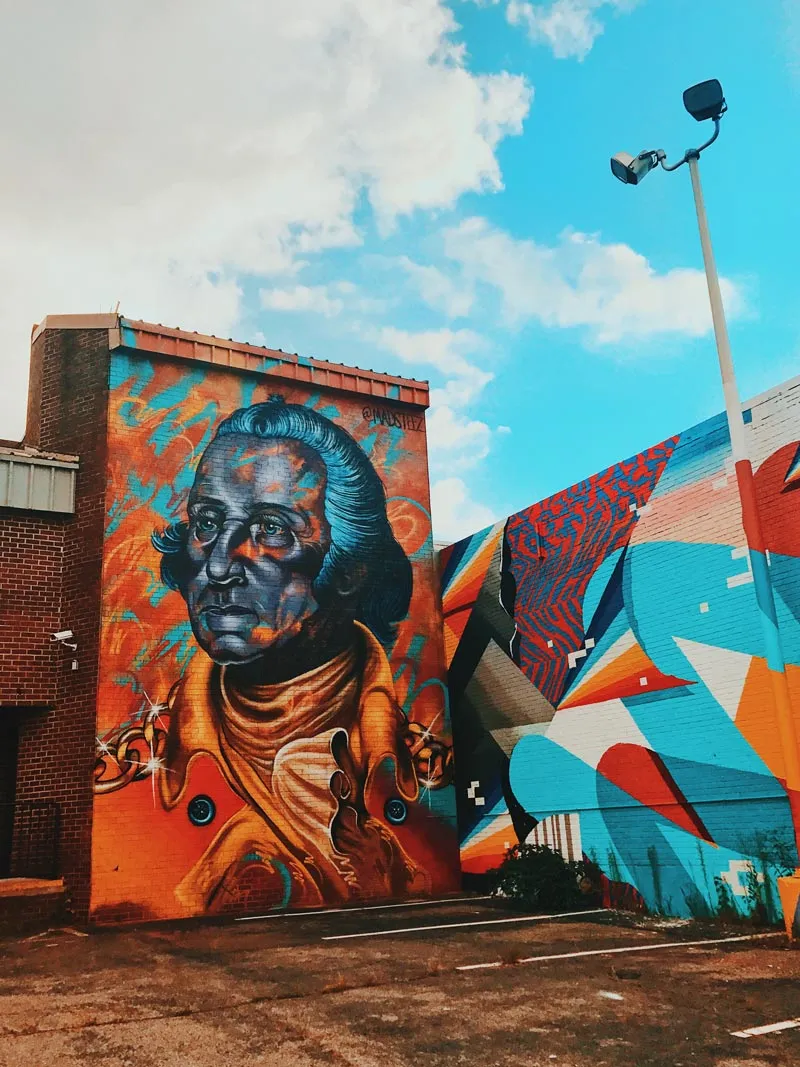
Shaw: Birding Amidst Cultural and Culinary Revival
Shaw, a neighborhood undergoing a strong cultural and culinary revival, is an intriguing blend of old and new. Although primarily an urban area, Shaw still features small green spaces and urban trees, attracting some bird species adapted to city life.
As you explore Shaw, notice Kennedy Playground, a small park in the neighborhood’s center. This park, with trees, lawns, and a playground, can attract urban and small migratory birds. You might encounter House Sparrows, European Starlings, and Rock Pigeons.
During migration seasons, you might be lucky enough to see migratory birds passing through this area. Carefully observe the trees and shrubs in the park; you might discover American Goldfinches, White-throated Sparrows, or Dark-eyed Juncos.
Tips for Birdwatching in Shaw:
- Best Times: Spring and fall are the best times for migratory birdwatching. Early morning or late afternoon is when birds are most active.
- Suggested Locations: Kennedy Playground, street trees, Blagden Alley (though mostly narrow, it may have some greenery).
- Possible Bird Species: House Sparrow, European Starling, Rock Pigeon, American Goldfinch, White-throated Sparrow, Dark-eyed Junco.
- Combine Your Experience: After birdwatching, explore Shaw’s burgeoning culinary and bar scene, enjoy live music at the 9:30 Club, or catch a movie at Landmark Atlantic Plumbing Cinema.

Washington D.C. is not just a political capital but also an attractive destination for nature lovers and birdwatching enthusiasts. From vast parks like Rock Creek Park and the U.S. Botanic Garden to smaller green spaces in neighborhoods, Washington D.C. offers countless opportunities to discover the beauty of the migratory bird world. Plan your birdwatching trip to Washington D.C. and experience the wonderful harmony between nature and urban life.